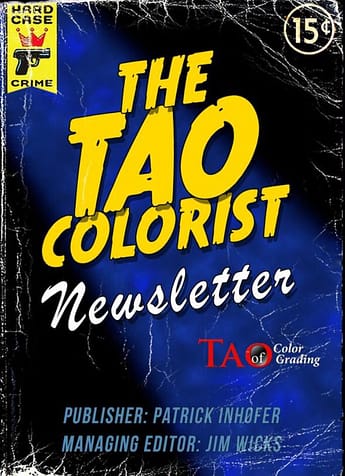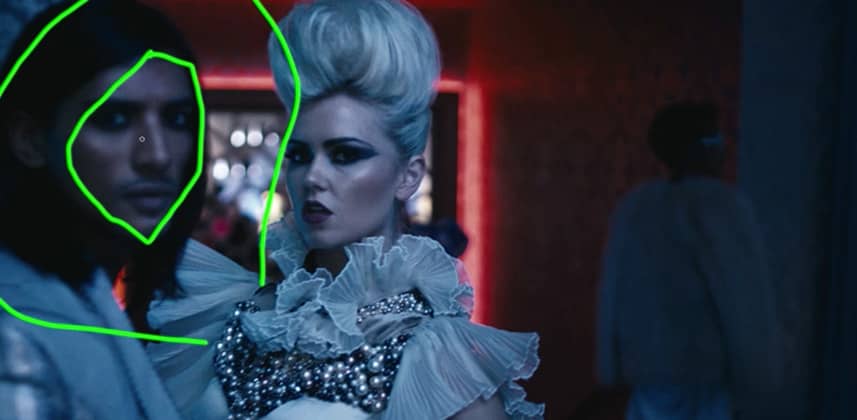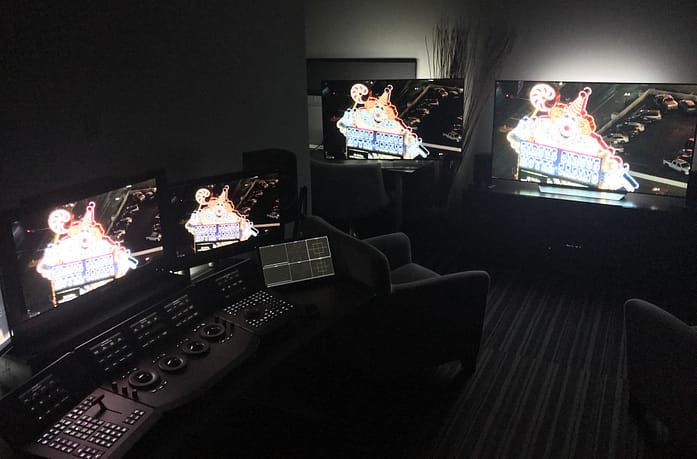12 Tips That Helped Me Have My Best Year in Business
Maybe its because I have two small kids, or maybe I’m just a big kid at heart, but there is just something about the holidays and this time of year that I love and always puts me into a reflective state.
2017 was the best year for my color correction business ever – I hit a ridiculous sales goal, landed more new clients than any previous year, and all though subjective – I thought we worked on higher quality projects.
Why was this year different than previous years?
Well, luck certainly plays role in any business, but if I had to put this year’s success in a sound bite ‘I applied myself every day to improving, and demanded improvement from myself and everything the company did’
As I sat down to write this article I had 42 things I did this past year to improve my color correction business – but 42 is way too many things, plus 42 doesn’t have a nice tie into the 12 Days Of Christmas that my 4-year-old has on in repeat in my house!
I digress.
In this article, I’d like to suggest 12 ways you can quickly and easily improve your color correction business. While improvement can mean many things, for the sake of this article, I mean earning more money, being more efficient and being better at your job. I can absolutely attribute these 12 things to helping me have my most successful year yet.
Of course, every business is different but as you read the items below try to think about how you can port the gist of each item to your own color correction business.
#1 Get Better As An Artist & Be More Creative
A wise and very successful colorist once told me – ‘All that matters is what ends up on screen’
She went on to explain that buttons, knobs, and dials constantly change, and while the tools are vital to what we do as colorists they’re just a means to the end – allowing us to transfer our creative vision from the color correction tools to the final picture on the screen.
Yeah, yeah, yeah….
You’ve probably heard this before right before the person tells you to go an art gallery and study Rembrandt or buy an Ansel Adams coffee table book and study it at every opportunity!
I don’t mean to say that the classical methods of improving your eye aren’t important – I’ve written about them a lot here on Mixing LIght.

But at least for me, studying Dutch masters or the grading perfection that is Chefs Table only got me so far improving my creative skills. I felt like I was just going through the motions because so many people agree that the classical approaches work best.
In 2017, I took a different approach to creativity – partaking in creative outlets that on their surface had little do with color grading:
- 90mins per day making music – I’ve always been a music nerd, and I have way too many guitars! But I’ve gotten away from it the past few years as my responsibilities have grown. I’ve made it a point to grab a guitar, keyboard or sequencer every day and just jam for 90min. Somedays this means blasting Led Zeppelin and playing along pretending I’m Jimmy Page and other days it means sitting down and tracking some new music of my own. Dedicating time to this has made me way more creative in the grading suite, and my daily jam sessions are great stress relief.
- Online drawing course – my wife is amazing painter and my daughter has inherited a lot of this skill and is producing beautiful work at a young age. Me? Stick figures are about as good as it gets! I’ve always admired illustrators and painters. So partly as a creative brain-building exercise and partly because I’m sick and tired of my ugly stick figures, I signed up for an online beginners drawing class – while I struggle still, it’s tapped into different side of my brain.
- Lateral thinking puzzles – a large part of what we do as colorists (and business owners) is problem-solving. Recently, I got hooked on a podcast series called Futility Closet. The podcast is great, and at the end of each episode, there is a section that features lateral thinking puzzles. I found myself looking more and more forward to these puzzles each week and quickly discovered websites and even books dedicated to lateral thinking puzzles. I can’t prove it, but I think as result of exercising my brain with these puzzles I’ve at least become a better problem solver ‘thinking outside of the box’ but also I feel generally more creative in the suite tackling sometimes complex shot problems.
While some people ooze creativity, others (myself included) have to practice to say creatively sharp. In the past, I’ve used classical methods to so so results. In 2017 when I started taking a different approach to keeping creative I saw improvements in my color correction work. No matter how you choose to keep your creativity thriving think about ways that might not be traditional.
#2 Get Better As A Technician
A few months ago I was lucky to catch up with a mentor – a colorist who had taught me a ton when I started my life as a colorist. As we discussed the PQ curve over a couple excellent IPAs, he looked up with a sly grin on his face and said ‘man there is just so much I don’t know about our craft’.
The colorist’s role for a multitude of reasons is arguably more complex than it has ever been.
Not only are artistic boundaries constantly being pushed, but the technical ones and the science of how we create and master images is too. As colorists, we have to merge developments in many related fields.
Unfortunately, it’s really hard to stay on top of technological developments in our industry unless you really work at it. Think of it this way – have you ever found yourself in the middle of a conversation between two colleagues and everything that comes out of their mouths sounds like a foreign language but you sit there nodding and every once and a while offer an ‘exactly’ when you have no idea whats going on?
One of your best resources for staying on top of our industry is the weekly Colorist Newsletter – published by our very own Patrick Inhofer with help from Jim Wicks C.S.I. and Patrick’s lovely wife Pam.

The newsletter is full of links to gear, techniques and other things happening in our industry.
It seems in our industry everyone is always talking about standards, but very few take the time to actually read said standards. One thing that has greatly helped my skill level as a technician this past year was to become a SMPTE member.
A membership to SMPTE, EBU or other similar standards bodies provides access to research papers, standards documents and interaction with the scientists and engineers shaping our industry. I’ve found membership to be a no-brainer and has really allowed me to better understanding some of the technical underpinnings of our work.
As a Mixing Light member, you already know the value of education but one thing you might think about to help improve your skills a technician is to attend to some tech related events – top on my list for the coming year is the Hollywood Post Alliance Tech Retreat
It’s possible (probable) that a lot of the content at the event will be over my head, but that’s awesome! You only learn by absorbing new things.
Put simply, time dedicated to improving your technical knowledge will pay dividends in the color suite.
#3 Work In New Genres & New Types Of Projects
Diversity is a word I’ve thought a lot about in the past year. For a color correction business, this can mean diversity of the client base but also the type of projects you work on.
For a large part of my career when someone would ask what kind of projects do I work on I had a quick answer ‘reality broadcast and docs with some political ad work sprinkled in’
While I’d occasionally win a music video, product spot or narrative short/feature those were few and far between.

In 2016 I started biding on these types of projects and this past year I ended up winning quite a few feature narratives and products spots.
I have no doubt that genre diversity has made me a better colorist overall. I’m finding I’m porting techniques from short form to long form and vice versa and thinking about my creative approach on projects borrowing thinking for these different types of projects.
While it’s easy to gain a specialty in a certain genre (and that’s ok!) try to diversify the types of projects you work on – not only will make you a better colorist it’ll keep you creatively engaged and having fun!
#4 Offer New Capabilities & Stay Technically Competitive
One of the challenges of any small business is staying competitive with larger companies in the same industry. In postproduction this used to be very true – you probably weren’t going install a $600,000 DaVinci 2k Plus turnkey setup in your basement home office!
While there is still some technical disparity between capabilities of larger facilities and smaller ones, the truth is, it’s never been easier to offer to new services and stay technically competitive with larger companies.

At least part of the success I experienced in 2017 can be attributed to trying to stay ‘on the curve’ of technical capabilities:
- Remote grading – I first invested in a remote grading solution in 2016 and this year I’ve pushed it even more – my remote capabilities have helped me break geographic boundaries of my market
- UHD/Wide gamut – We can argue the usefulness of UHD at a typical direct view screen size/viewing distance but in a few years there probably won’t be any HD only TVs sold! Every room (including our audio rooms) can now display UHD and wider gamuts like P3.
- HDR – I believe that HDR is the future of our industry and I recently invested in HDR 10 & Dolby Vision capabilities allowing me to compete with much larger companies and ones outside of my geographic sphere of influence.
For your company and market, your approach to staying technically competitive with other companies will vary, but its something you should always be evaluating and keeping your eye on.
Member Content
Sorry... the rest of this content is for members only. You'll need to login or Join Now to continue (we hope you do!).
Need more information about our memberships? Click to learn more.
Membership optionsMember Login


